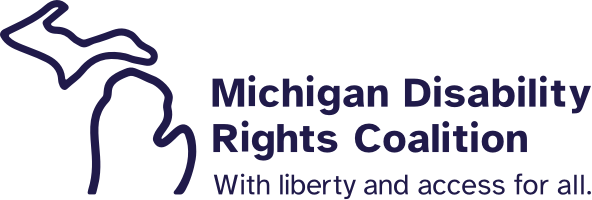Pumpkins, Pirates and Pride: AT and Halloween
Tuesday, October 29, 2019
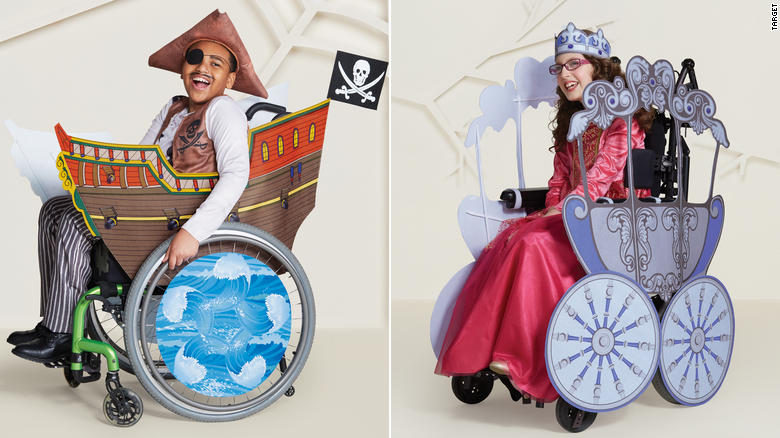
by Laura Hall, MATP Staff Member
Each year around this time, I write a blog about Haloween costumes that incorporate a person’s assistive technology. It’s one of my favorite posts of the year, which is interesting because Halloween has never really been my favorite holiday. When I was a kid, I always found that choosing a Halloween costume was difficult and my choices were limited because of my wheelchair. I couldn’t wear anything stiff, bulky, or long, as it would get caught in my tires. With trick-or-treating, I always felt a little left out because I could never get up to the homes of my neighbors who had steps. Instead, my sister would have to get my candy (and she would always pick the best stuff for herself) and no one would ever even see my costume. Over the past several years, however, there has been more and more attention given to costumes that incorporate a person’s mobility equipment or assistive technology. I enjoy looking for these costumes and writing this blog every year because, to me, this represents disability pride, pride in one’s assistive technology, and a spirit of inclusion.
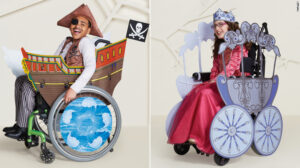 In fact, this is the first time ever I have seen a national retailer get in on the action. Through their Hyde & EEK Boutique line, Target is featuring four Halloween costumes with kids with disabilities in mind. The princess carriage and pirate ship are wheelchair covers sold separately from the costume to complete the ensemble, and the shark and unicorn costumes have been designed with no tags, flat seams, plush construction, and the option to remove attachments like hoods and tails for kids with sensory disabilities.
In fact, this is the first time ever I have seen a national retailer get in on the action. Through their Hyde & EEK Boutique line, Target is featuring four Halloween costumes with kids with disabilities in mind. The princess carriage and pirate ship are wheelchair covers sold separately from the costume to complete the ensemble, and the shark and unicorn costumes have been designed with no tags, flat seams, plush construction, and the option to remove attachments like hoods and tails for kids with sensory disabilities.
Some of the most ingenious costumes that are enhanced by assistive technology are those that are made at home. After much thought and research, my top three costumes in the do-it-yourself category are:
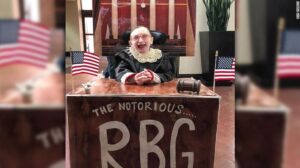
Supreme Court Justice Ruth Bader Ginsberg
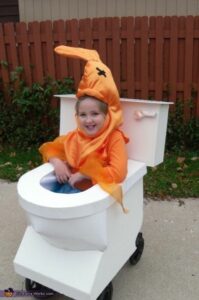
Fish Burial at Sea
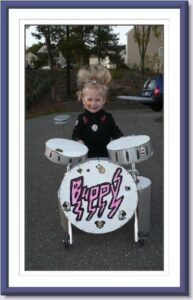
Let’s Rock!
For a few lucky kids with disabilities, the non-profit organization Magic Wheelchair aims to create costumes that are not just cool, but “epic”. Magic Wheelchair brings together artists, builders, families, and communities to create costumes for kids ages 5-17 who primarily use a wheelchair for mobility. The process typically takes about 8 weeks, and the results are amazing. 2019 Magic Wheelchair costumes featured dragons, princess carriages, Transformers, cars, and so much more!
For even more ideas on how to make your Halloween inclusive, check out Connecting for Kids guide on hosting an inclusive Halloween. The guide contains some great things to keep in mind with regard to disability, such as:
- Children who are nonspeaking may not be able to say “trick-or-treat” or “thank you.” Do not push for verbal responses and be sensitive to children who do not give expected social feedback.
- Be prepared to describe treats for children with blindness or low vision issues.
- Make sure that you are handing out treats in a well-lit, accessible area. If your house is not accessible, consider handing out treats in a different location (for example, in the driveway or in a community common area).
- When addressing trick-or-treaters, make sure they can see your face and mouth as you speak. This can help children who may have speech and hearing disabilities. Better still, learn some simple Halloween signs (video).
Happy Halloween!
